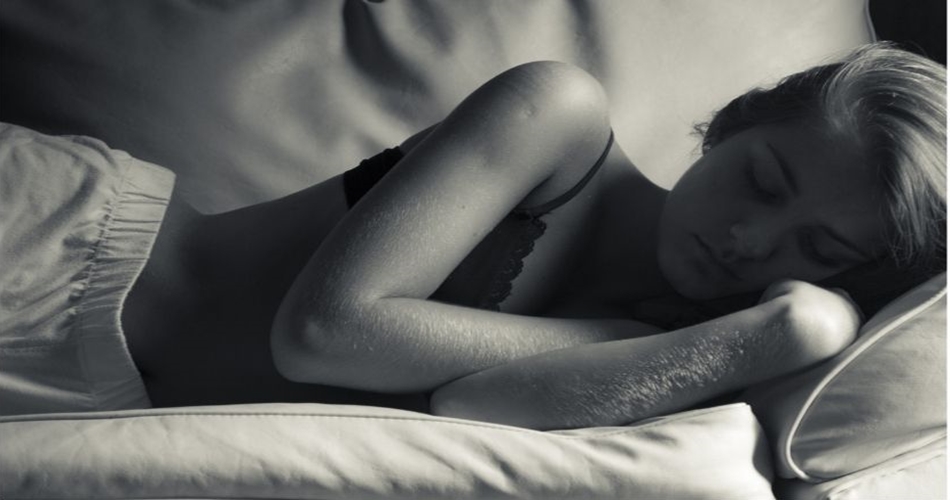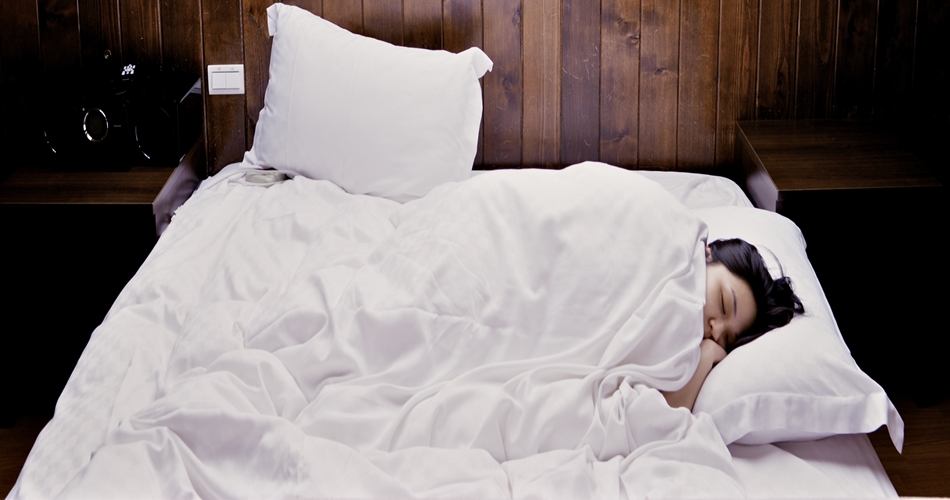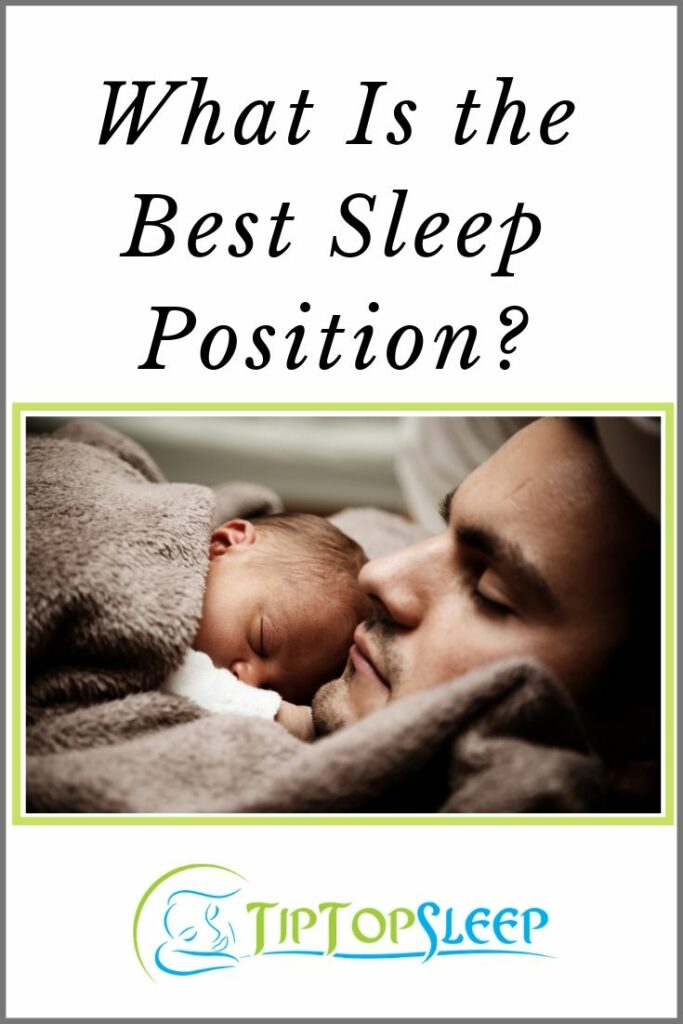This common question arises all over the world. People want the best possible sleep every night. As well as sleep they want to do all they can to improve and maintain their health and posture to be the best it can be.
What is the best sleep position? The best sleep position is on your left side. Sleeping on your side with legs bent and a small pillow between the knees supports the back. Sleeping your left side assists many major organs to perform at their best while your body rests. This in turn also gives you optimum blood circulation throughout the night.
Are Our Sleep Positions Important?
Yes, our sleep positions matter. Acquiring the most sleep in the healthiest position is the number one most important thing we can achieve every day. If this one simple act is not carried out regularly it will affect all areas of your life.
Unfortunately, apart from the quality of sleep, there is a real chance that your chosen comfortable nighttime position could cause health issues now or later in life.
These can include a backache and neck ache, indigestion problems, fatigue, sleep apnea, muscle cramping, impaired circulation, headaches – even wrinkles on the face, neck as well as the chest.
So getting your sleep position correct earlier rather than later could be beneficial in the prevention of health issues arising as you get older.
What Is the Best Sleep Position?
The best sleep position is the one in which you get the optimum restful sleep in a healthy way for your body. This may not necessarily be the one the professionals want us to adopt. Believe it or not, there are actually people throughout the world that sleep in weird and wonderful ways that have restful sleep and not health issues present.
Most of us throughout the night will change positions – three or four different ones which help relieve pressure on the body. It is known as combination sleeping. But you will probably spend most of the night in your favored position.
Our body shifts multiple times throughout the night in order to keep our muscles and limbs from being dazed.
Below you can learn about the advantages and disadvantages of the common ways we sleep and discover easy tips on making each position a little bit better for you to continue to use.
The sleep positions below are numbered 1 to 5 with 1 being the best sleep position right down to the worst sleep position. Keep reading for in-depth information on each of the positions.
- Side Sleepers
- Back Sleepers
- Fetal-Position Sleepers
- Stomach Sleepers
- Starfish Sleepers
1. Sleeping on Your Side (Left Is Best)
Fifteen percent of people choose this sleep position (it is where your body and legs are relaxed in a straight position). It helps decrease acid backflow, and since your vertebrae are stretched, it assists in preventing back and neck ache.
Moreover, you’re less likely to snore in this sleeping position, because your airways are kept open. This side position is also the best choice for those with sleep apnea.
For those suffering from constant back pain, reflux, snoring, sleep apnea, as well as pregnant women side sleeping is also a great option.
The best side to sleep on is your left side. When lying facing the left you are not placing unnecessary pressure on your liver. Which in turn improves blood flow and circulation.
To make the blood flow even easier you should place a pillow between your knees and slightly bend your legs.
Sleeping on your left side also promotes lymphatic drainage which is the dominant side of the lymphatic system.
The stomach and pancreas are on the left-hand side of the body so when lying on your left side digestion are easier because of gastric juices and pancreatic enzymes are then able to move freely through our bodies.
80 percent of the heart is on the left-hand side of our bodies so when sleeping on our left sides the Lymphatic system can drain a lot easier as we sleep on the left-hand side.
When you sleep on your side snoring can be reduced by sleeping in this position. Because your head, neck, and body are aligned, and your larynx is in the best position for unimpeded breathing also a relaxed tung will not rest against the back of the throat.
Interesting that the first step when undergoing any treatment or investigations into snoring, you are advised to start sleeping on your side. (Try the left to get optimal health benefits while you sleep)
If snoring is not controlled in this way further investigations into having a possible sleep apnea disorder should then begin.
Want to give this side sleeping position a try? On your side, test out the following steps.
1. Go into bed and carefully twirl on to one side.
2. Place a pillow to support the head and neck.
3. Pull the knees up slowly then put a pillow between them.
4. For the extra backing, fill gaps between the body and mattress with more pillows, especially at the waist area.
2. Sleeping on Your Back
It’s not the most popular position as only eight percent of people sleep on their backs but it’s still one of the best sleep positions. It is sometimes considered the healthiest option for some people.
Sleeping on your back allows your head, neck, and spine to rest in an aligned position. This means that there’s no extra strain on those areas of the body, so you’re less likely to experience ache.
Sleeping facing the roof also provides the best chance to ward off acid backflow (or reflux). Just be sure to use a pillow that heightens and supports your head enough.
You want your stomach to be below your larynx to prevent food or acid from coming up in your digestive area. Elevating head by 10 to 30 percent completes the back sleeping position.
Placing a small pillow beneath the knees can provide further support and help maintain the natural curve of the vertebrae.
However, sleeping on your back in some people causes the tongue to relax which in turn blocks their airway, making it a dangerous position for those who suffer from sleep apnea. (Sleep apnea is a medical condition that causes some people to stop breathing at various intervals).
Sleeping on your back in some cases can make snoring more severe. If this is the case a sleep testing facility should be attended. They are equipped to help identify if the person does, in fact, suffer from Sleep Apnea or is just a snorer.
To embrace this sleeping position, on your back, test out the following steps.
1. Lie flat on your back facing the roof, and avoid twirling the head sideways.
2. Position a pillow to the back of the head and neck.
3. Place a small pillow beneath the knees.
4. For extra support, fill in other gaps between the body and mattress with extra pillows, such as under the lower back.
Want some easy steps to learn to sleep on your back – see them in my article here…
3. Sleeping in the Fetal Position
This sleep position is also known as the Fetus position and is the most popular by far with 43 percent of adults choosing this position. It is an easy sleep position lying on your side in the fetal position where your knees are bent, some slightly and others pull them tightly towards your chest.
In this position your legs are hunched it is a great position to lay in especially on your left side is great if you’re pregnant. If we can all learn to lay this way facing the left our organs will work at capacity throughout the night.
That’s because it betters the blood circulation in your body and in the blastula, and it helps your uterus from being pushed against your liver, which is on your right side.
Mothers to be will benefit from the pressure-allay advantages of sleeping on the left side since it keeps your organs work freely without pushing against each other.
This fetal position is also good for snorers. But resting in this position that’s curled up too tightly can curb breathing in your diaphragm. And it can leave you feeling a bit achy in the morning, particularly if you have arthritis in your joints or back.
To prevent these symptoms just by straightening out your body as much as you can, instead of pinching your chin into your chest and pulling your knees up high. You can also reduce ache on your hips by placing a pillow between your knees.
To adopt this sleeping position, in the fetal, test out the following steps.
1. Get into bed and roll on to one side.
2. Place a pillow in the position that supports your head and neck.
3. Draw the knees up towards the chest until the back is almost straight.
4. Sleeping on Your Stomach
Stomach sleeping eases snoring and some cases of sleep apnea, but it’s bad for basically everything else. Seven to ten percent of adults pick this sleeping position, but it can give you back and neck ache since it’s hard to keep your vertebrae in an inactive position.
Moreover, stomach sleepers put a burden on their muscles and joints, possibly arch to numbness, tingling, aches, and irritated nerves. It’s best to try to choose another position, but if you must sleep on your stomach and you can’t change this habit.
Try to lying face down to keep your upper airways open instead of with your head turned to one side with your forehead brace up on a pillow to allow room to breathe If this is the preferred position, try using pillows to gradually train the body to sleep on one side.
Resting on the tummy is generally regarded as the worst sleeping position. Sleeping all night with the head turned to one side can induce an aching the neck. Try to fix a pillow under the hips and lower abdomen to give the bottom of the spine an advance.
Stomach sleepers should also avoid innerspring and latex beds because they’re too bouncy to be comfortable
To adopt this sleeping position, sleeping on your stomach, test out the following steps.
1. Get into bed and roll on to their front.
2. Place a slim pillow under the abdomen and hips to raise the mid-section.
3. Use a flat pillow for the head or consider sleeping without a pillow.
5. The Starfish Position
People who sleep in a starfish posture sleep on their backs with their arms up over their heads. Approximately six percent of people sleep this way.
Research shows people who sleep in this posture do not like being the center of attention. They are also likely to be good listeners and they are helpful.
As with those who sleep on their backs, people who sleep in the starfish posture may be likely to snore due to the tung relaxing towards the back of the throat and thus causing further sleep problems.
Change Sleeping Positions
Of course, the most important thing is that you are easy convenient enough to sleep through the night than to sleep in the so-called “best” sleep position. Here are some tips for you:
Want to Try a New Sleep Position – Here Are Some Tips to Help
If you want to make some changes to improve the quality of your sleep, we’ve got some tips for trying to implement a more comfortable sleeping position. If you’re just too attached to the way you sleep on a regular basis, we’ve got some tips for easing you into dreamland just the way you like it.
Trying a new sleep position can be daunting. It will take some organization and perseverance.
You need to be aware that your sleep will most likely be affected while adjusting to your new healthy sleeping habits.
If you have read this far into the article I believe that you recognize you need to attempt a positive change.
A change you know will benefit you and your overall health in the long run.
The tips are designed to make this transition as easy and as quick as possible.
- reduce caffeine, sugar consumption and alcohol before bed
- stop using electronics with blue light before bed
- make your room as dark as possible
- change where you lay in your bed either opposite or even put your head where your feet usually go. Make the bed upside down. You will not find it easy to go back to your usual sleeping position.
- If you do have some initial success in changing your sleep position you may want to entertain the idea of introducing new bedding or sleep gear. Do you need a new mattress, comforter or pillows?
New sleep positions may require small pillows or even body pillows which provide great support and help keep you in place during the night. Why not add some fresh new sheets and shams and while you are at it splurge on some new P.J’s to complete the fresh new look.
A new rested you is could be just around the corner.
Be consistent and patient if you truly want to make a change to your sleeping habits. If your goal is to boost the quality of your sleep, it may be well worth it to persevere. It’s mostly a matter of being determined to adapt to change for the better.
This is Why You Should Sleep on Your Left Side
To Finish – What Is the Best Sleep Position – Best and Worst Revealed
We learned that the benefits of sleeping in the correct position can affect many parts of our lives. Including but not limited to posture, clear minds, fatigue, sleep apnea, snoring, circulation issues, reflux and heartburn, and aging with wrinkles in our faces, necks, and chests.
Regardless of health benefits, most of us sleep best in the position we find most comfortable. According to Dr. Paruthi from T. Luke’s Sleep Medicine and Research Centre, as well as The Saint Louis University School of Medicine.
Testing out different sleep postures won’t do any harm, so feel free to try each sleeping position for a few nights and see which suits you the best.
Whether it’s back, side, or stomach, people will generally wake up in the position that their bodies naturally nap in. Unless a doctor specifically encourages you to switch positions, it’s apparently best to keep doing what feels right for you.
As always here’s to better sleep!
Frequently Asked Questions
What Is the Healthiest Way to Sleep?
1. The healthiest sleep position is one that allows you to receive the best possible sleep and wake up refreshed with a clear head to commence a new day.
Maintaining the curve of your back is imperative. Lay on your back with support under your knees which are slightly bent. This will have your body in the best alignment for a healthy back.
2. Lying on your left side with your legs slightly bent is healthy for your organs and blood circulation. You can place a pillow between your knees for support as well as a pillow in front of you and/or one behind your back for further support.
What Is the Most Comfortable Sleep Position?
Lying on your left-hand side the knees slightly bent with pillows for added support. As outlined above.
What Is the Best Sleep Position for Insomnia?
Your left-hand side with the relevant support as outlined above.
Ultimately it will be whatever position gives you the best sleep without affecting your health and body posture.



